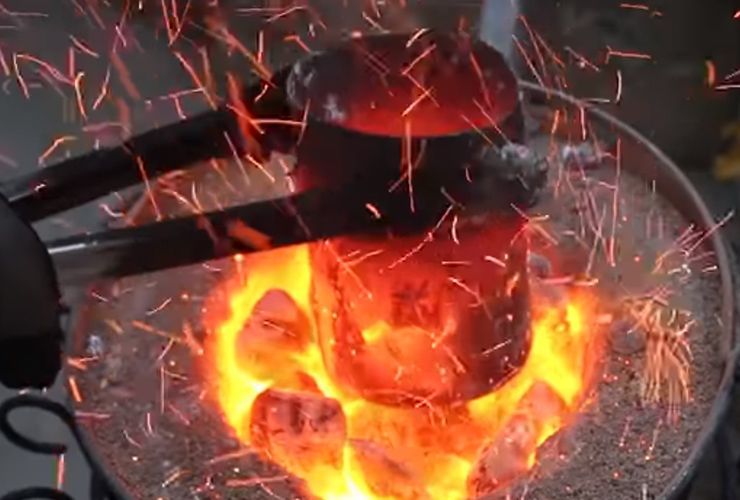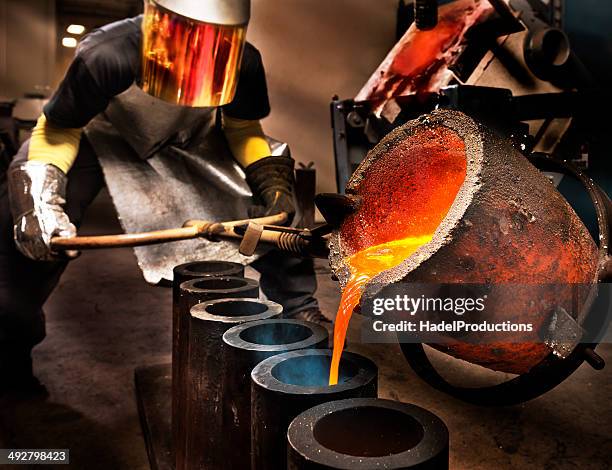Comprehending Metal Casting Processes: Technologies and Trends in the Foundry Industry
The foundry industry is experiencing significant improvements driven by technical developments. Advancements such as 3D printing and man-made knowledge are improving steel casting procedures, improving efficiency and precision. Sustainable methods are acquiring traction, emphasizing the importance of environmental duty. On top of that, the introduction of advanced products and automation is enhancing general casting quality. These developments recommend a crucial shift in the market, questioning concerning future instructions and ramifications for manufacturers.
Innovations in 3D Printing for Metal Casting
Current advancements in 3D printing modern technology have considerably changed the landscape of steel casting. The integration of additive production techniques has actually allowed the rapid manufacturing of complex patterns and mold and mildews that were impossible or formerly tough to achieve with typical techniques. By utilizing materials such as sand and metal powders, manufacturers can create complex geometries that enhance style adaptability and decrease product waste. This technology not just expedites the prototyping process yet also enables for the modification of elements customized to specific applications.
3D printing helps with much shorter lead times, which is important in markets calling for quick turn-around for components. The modern technology additionally sustains the manufacturing of lightweight structures, thereby improving power effectiveness in final result. Because of this, the foundry industry is seeing a change in the direction of even more sustainable practices, driven by the effectiveness and precision used by these modern-day 3D printing strategies in metal casting procedures.
The Role of Artificial Intelligence in Precision Manufacturing
As industries progressively take on innovative production technologies, synthetic intelligence (AI) is playing a critical function in enhancing precision manufacturing processes. AI formulas evaluate huge datasets to enhance and determine patterns production criteria, resulting in improved precision and efficiency. In metal casting, AI help in anticipating maintenance, decreasing downtime by projecting tools failings before they take place.
In addition, AI-driven simulations allow makers to design the casting process, refining styles and lessening flaws. Equipment understanding strategies improve high quality control by identifying anomalies in real-time, thus guaranteeing that just products fulfilling stringent specifications continue with the assembly line.

Sustainable Practices in the Foundry Industry
Sustainability has become an important emphasis in the foundry market, triggering makers to adopt practices that minimize environmental effect while preserving efficiency - Aluminum Foundry. One famous technique consists of the recycling of materials, particularly metals, which significantly decreases waste and energy consumption. Shops are significantly executing closed-loop systems, allowing for the reuse of sand and other casting products, therefore decreasing the demand for virgin sources
Furthermore, energy-efficient technologies, such as electric heaters, are getting traction, as they reduced greenhouse gas emissions contrasted to typical techniques. Numerous shops are checking out the use of green finishings and biodegradable binders to decrease poisonous results. Employee training on sustainable techniques has additionally become important, promoting a culture of ecological responsibility within companies. On the whole, these sustainable methods not just contribute to ecological conservation however additionally enhance the long-lasting viability of the foundry market in an increasingly eco-conscious market.
Advancements in Materials for Improved Casting High Quality
With the continual development of the foundry sector, developments in products have come to be vital for boosting casting top quality. Advanced alloys and composite materials are progressively being utilized to enhance mechanical homes and lower defects in castings. These materials typically use premium strength-to-weight proportions and improved resistance to rust and wear, resolving the needs of modern applications.
Additionally, the consolidation of nanomaterials is acquiring grip, enabling finer microstructures that lead to boosted surface area coatings and dimensional precision. Aluminum Foundry. 3D printing modern technologies additionally contribute in creating complicated geometries with very little waste, making it possible for the usage of customized products that were formerly challenging to cast
Additionally, the advancement of eco-friendly binders and additives adds to sustainable practices while maintaining top quality outcomes. Jointly, these advancements not only enhance the efficiency of actors items yet likewise straighten with the industry's shift towards sustainability and performance.
Automation and Robotics in Metal Casting Procedures
Automation and robotics are reinventing metal casting processes by streamlining procedures and enhancing precision. In modern-day factories, robotic systems are used for tasks such as mold and mildew handling, pouring, and ending up, considerably minimizing human intervention. This not only minimizes the threat of mishaps yet likewise guarantees constant quality in manufacturing.
Automation technologies, such as computer system numerical control (CNC) equipments, assist in intricate styles and complex geometries that were formerly challenging to accomplish. Additionally, real-time information analytics allow makers to monitor processes and maximize efficiency continuously.
The assimilation of automation leads to raised productivity and efficiency, enabling shops to meet growing market demands while minimizing preparations. As the sector embraces these improvements, the workforce is additionally advancing, requiring new skills to run and keep innovative machinery. Overall, the adoption of automation and robotics is a critical pattern shaping the future of metal casting processes.
Frequently Asked Questions
What Is the History of Metal Casting Strategies?
Metal casting strategies date back to ancient worlds, with evidence of bronze casting in Mesopotamia around 3000 BCE. Over centuries, techniques advanced significantly, integrating improvements in products and innovation, forming modern-day industrial methods.
Exactly How Does Metal Casting Impact the Setting?
Metal casting substantially affects the environment via power consumption, emissions, and waste generation. Developments in sustainable methods and technologies intend to reduce these results, promoting even more eco pleasant methods within the industry.
What Precaution Are Crucial in Foundries?

What Prevail Flaws in Metal Casting Products?
Common defects in steel casting items include porosity, shrinkage, misruns, cool shuts, and surface area imperfections. These problems occur from aspects such as improper temperature level control, inadequate mold design, and contamination throughout the casting procedure.
Exactly How Do Foundries Make Certain Quality Assurance in Casting Processes?
Foundries execute rigorous high quality control actions via normal inspections, standard screening, process surveillance, and adherence to market standards. These practices aid determine defects early, making sure the honesty and reliability of the final casting items.
Innovations such as 3D printing and artificial knowledge are reshaping steel casting procedures, improving efficiency and precision. Current developments in 3D printing modern technology have considerably changed the landscape of steel casting. Automation and robotics are reinventing steel casting processes by simplifying operations and boosting precision. Metal casting methods date back to ancient human beings, with evidence of bronze casting in Mesopotamia around 3000 BCE. Usual problems in steel casting products consist of porosity, shrinking, misruns, cold shuts, and surface area imperfections.